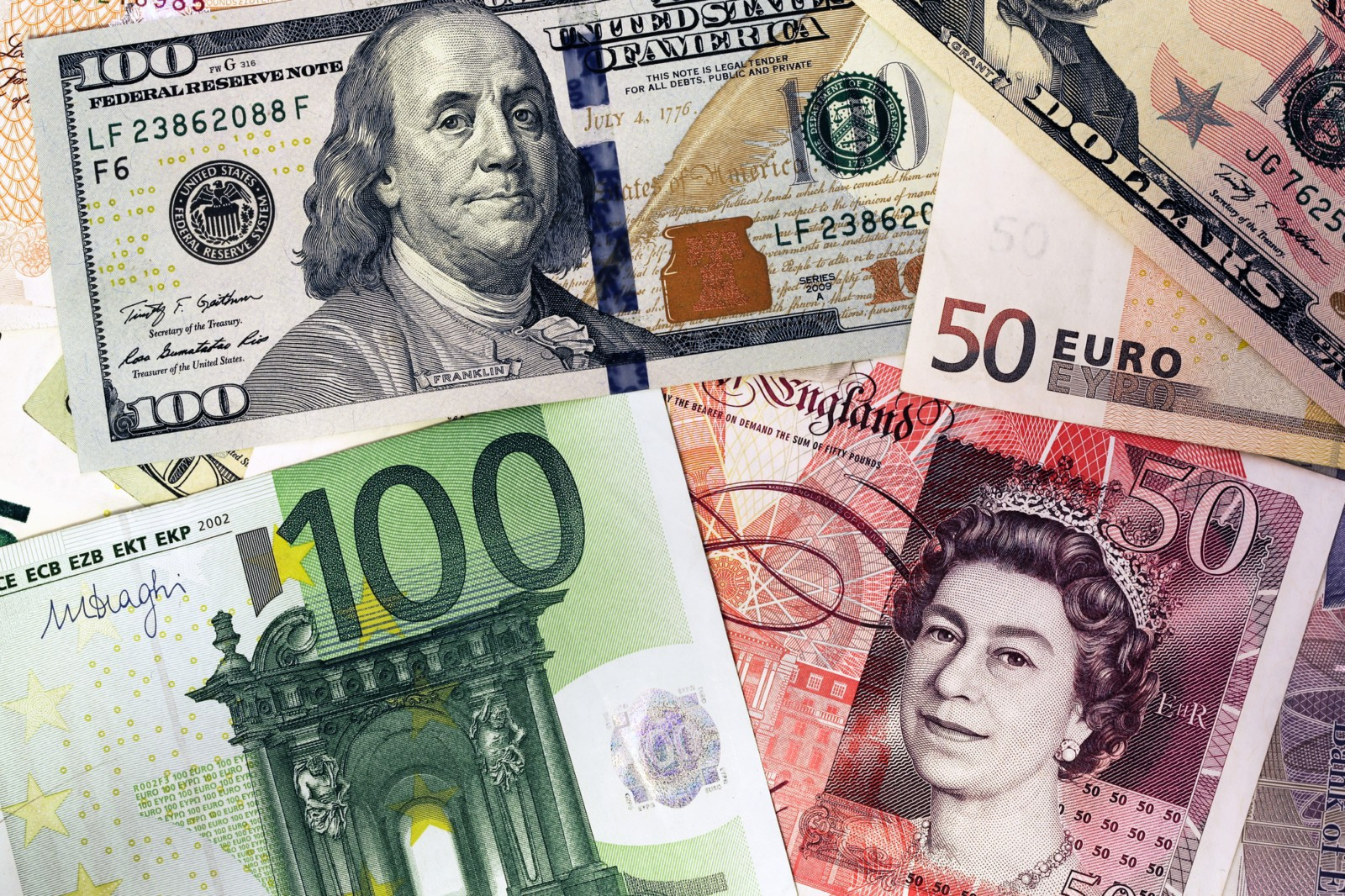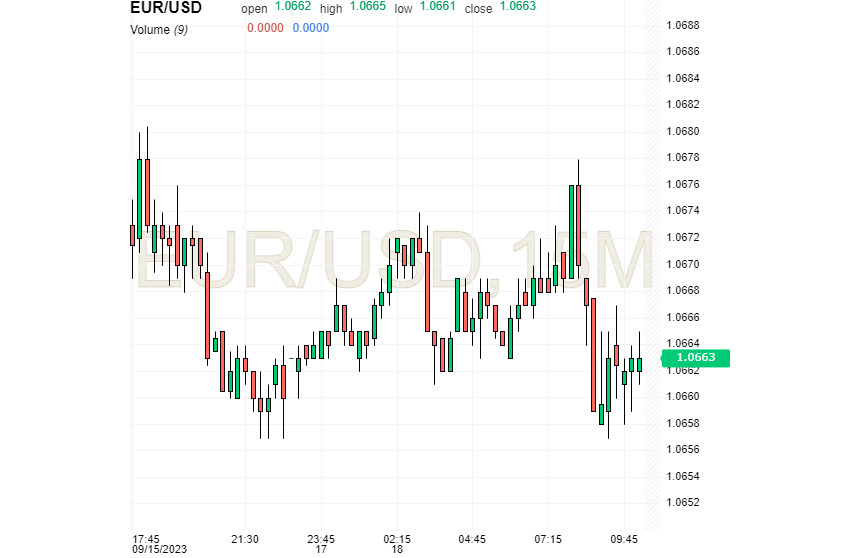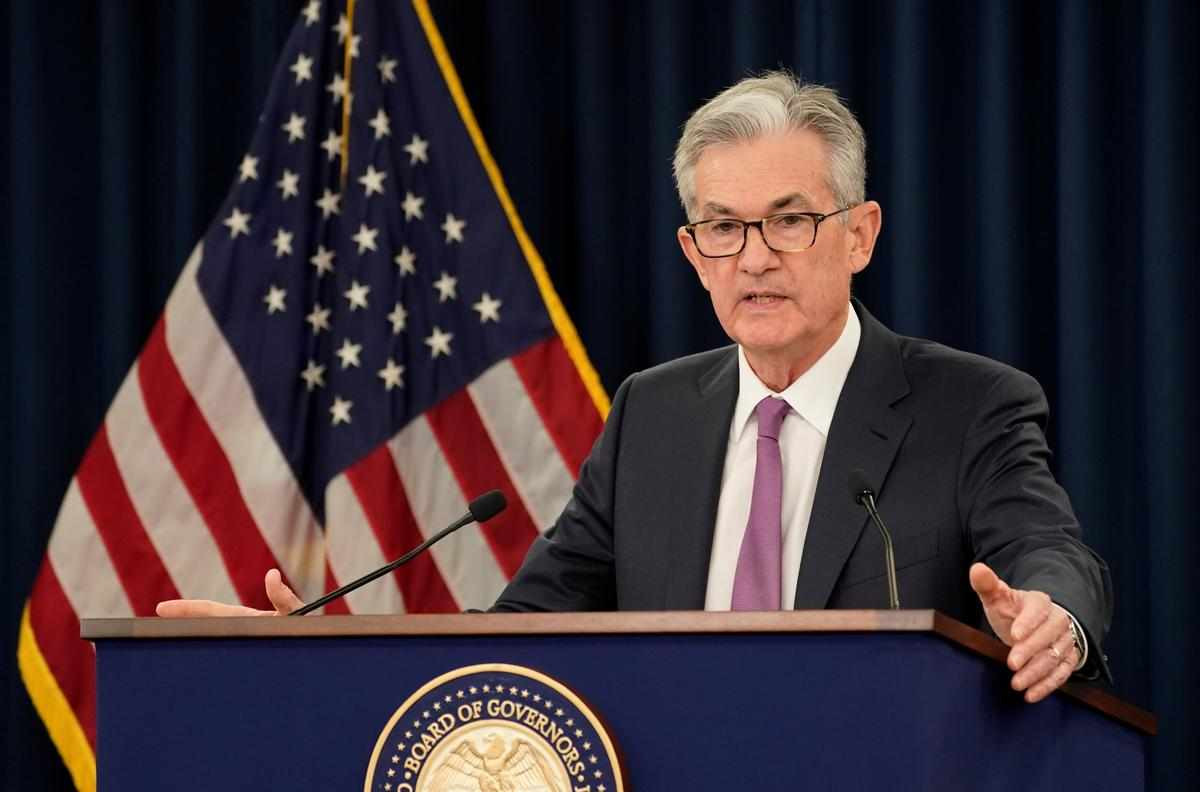
The start of the new week proved to be eventful for major currencies: the American dollar stands at a crossroads, eager to reach new peaks but unable to do so, the European currency is trading flat, and the British pound fears potential decline in the long run.
On Monday morning, the 18th of September, the greenback showed a slight decline, giving a bit of ground to the euro. The EUR/USD pair traded around 1.0663, trying to move towards new highs.

UOB analysts believe the European currency has now entered a consolidation phase. The expected trading range for the EUR/USD pair is quite wide, between 1.0645 and 1.0695. To maintain its upward momentum, the euro should trade near the 1.0730 resistance level, UOB suggests.
As for the US currency, it showed solid growth in the past few weeks, but signs of USD vulnerability are emerging. According to the US Dollar Index (USDX) reports, there is a noticeable rise in bullish sentiment for the dollar. Last week, traders increased their net positions bullish on the USD. Analysts estimate that major market players increased their purchases by 10% and reduced their sales. If this trend continues, the US dollar might grow further. However, this growth is currently uncertain.
Currency strategists from UBS see the near-term outlook for the dollar as unstable. They believe the euro will benefit from a narrowing rate gap with the US. Currently, both the Fed and the ECB need to make measured decisions regarding further rate hikes. However, the likelihood of tighter policies in the eurozone is higher than in the US since core inflation is decreasing more slowly in the EU countries compared to America.
Furthermore, UBS believes that negative economic surprises in the region are already factored into the euro's price. However, overall, the euro's dynamic remains fairly positive. The single currency will also benefit from an improving eurozone trade balance.
Regarding the near-term prospects of the British currency, experts are not overly optimistic, but they are not overly pessimistic either. Many analysts remain cautious about the pound sterling. Yet, most major economists are optimistic about the pound's long-term dynamic, forecasting GBP growth in 2024.

It is possible that next year, the pound sterling will face unique challenges that will significantly affect the British economy. Analysts believe that the UK will encounter five bearish factors that will exert strong pressure on the pound in 2024:
1. Housing Market
Currently, experts have noted a slowdown in housing sales in the country. Additionally, many homeowners are finding it harder to repay their mortgage loans. It is worth noting that some five-year deals made before the COVID-19 pandemic will be closed in 2024. At that time, UK homeowners will face the effects of sharply rising mortgage rates. Even though the government offers support, it might be insufficient.
2. Rising Cost of Living and Soaring Inflation
Throughout this year, the UK authorities have been reducing inflation slower than most other leading countries. Moreover, in August, the inflation rate was twice as high as in the United States (6.8% versus 3.2%). Analysts say that the hawkish sentiment of the Bank of England bolstered the pound in 2023, but the central bank cannot raise rates indefinitely. Preliminary assessments suggest that the UK's inflation and the accompanying cost-of-living crisis have not negatively impacted the economy. However, it is too early to draw positive conclusions amid the rise in unemployment, the economic slowdown, and a possible recession. These factors could significantly slow down any potential rise in the pound, experts warn.
3. Economic Downturn
This year, the UK economy has surprised forecasters by proving more resilient than traders and analysts expected. However, by the end of the summer, the situation had taken a turn for the worse. August business activity data showed a significant decline: the service sector business activity index plunged to 48.7 points, and in the manufacturing sector, it dropped to a critical level of 42.5 points. Against this backdrop, there is an increased likelihood of a recession by the next general elections scheduled for 2024. The economic issues associated with inflation and the rising cost of living in the UK are adding fuel to the fire.
4. Brexit Challenges
Brexit remains a separate issue for the UK. Some analysts have paradoxically concluded that Brexit mainly signifies slow growth rather than a sudden economic downturn. Seven years after the EU referendum vote, the negative impact on the pound persists. Apart from the slowdown in the UK's economic growth post-Brexit, there are other structural issues, such as supply chain complications.
5. Potential Election Surprises
The general elections set for 2024 hold particular significance for GBP traders. Many analysts expect the Labour government to take power, with a Conservative victory seeming unlikely. However, it is challenging to determine how such an outcome will influence the pound's trajectory. Moreover, there are many factors that could put pressure on GBP. The elections might also bring numerous surprises, further capping the pound's growth.
Markets are currently focused on the Federal Reserve meeting scheduled for Tuesday and Wednesday, September 19-20. Experts emphasize that the regulator might maintain the key interest rate at its current level, a move that the market has already anticipated.

Traders and investors are particularly interested in comments from Jerome Powell, the Fed's chair, accompanying the regulator's current decision. The Fed's firm stance and its willingness to tackle inflation, as well as its assessment of the current economic landscape and inflation trajectory, will influence risky assets.
Also, this week, market participants will evaluate preliminary data on business activity indices in both the industrial and service sectors of Europe and the US. These indicators provide insights into business sentiment amid high rates, as experts highlight.
An overwhelming majority of analysts (99%) expect the key interest rate to remain unchanged at the September meeting. Notably, it currently stands at 5.25-5.5% per annum. By the end of 2023, many analysts foresee an increase to 5.5%–5.75%. It is worth noting that a rate increase supports the dollar; hence, any pause in hikes could restrain the US currency's value.
The Fed plans to release new macroeconomic forecasts, which include potential dynamics of the key interest rate, GDP levels, and inflation. Jerome Powell's comments, detailing the regulator's rate plans, hold significant importance.
Furthermore, on Thursday, September 21, the Bank of England is expected to meet. It might raise its key rate by 25 basis points and also release inflation data for the UK. The British regulator might increase the interest rate from the current 5.25% to 5.5%. The central bank's decision will affect the pound's dynamic, but experts are unsure whether this influence will be positive or negative.
Market participants anticipate a further tightening of monetary policy by the Bank of England and a pause in rate hikes from the Fed. Many economists are almost 100% confident that the rate will remain unchanged. Nevertheless, analysts do not rule out further interest rate hikes by the Fed given the prolonged inflation growth in the US.
 English
English 
 Русский
Русский Bahasa Indonesia
Bahasa Indonesia Bahasa Malay
Bahasa Malay ไทย
ไทย Español
Español Deutsch
Deutsch Български
Български Français
Français Tiếng Việt
Tiếng Việt 中文
中文 বাংলা
বাংলা हिन्दी
हिन्दी Čeština
Čeština Українська
Українська Română
Română

